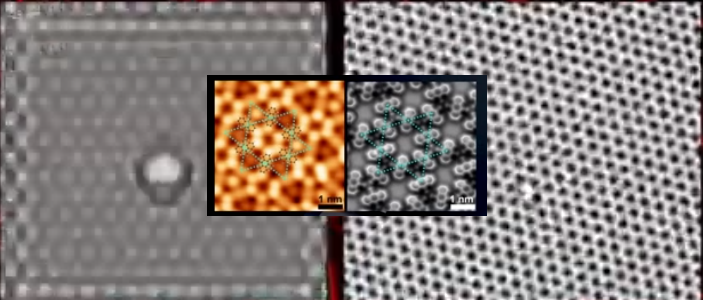The scientists have created an artificial atom for the first time in the lab. In this blog post, we will explain how simple is the process of making an artificial atom in the lab. It will change science and technology. New technologies will be created.
The branch of Physics called Condensed Matter Physics led us to the creation of an artificial atom. This is a branch of Physics in which we carefully study the solid state of matter. There are two states of solid matter. The first one is known as crystal solids like diamonds in which the configuration of atoms is three-dimensional, and this three-dimensional sequence is repeated. We see a pattern repeatedly. We see symmetry. These kinds of solids are called crystal solids. The second type of solid is known as amorphous solids. They make irregular 3-D sequences. The constellation of atoms seems irregular, and atoms connect with each other without any pattern in these kinds of solids.
A married couple at Cornell University is studying the structure and properties of various atoms in both solid states by using Condensed Matter Physics to create artificial atoms. They are Jie Shan and Fai Mak. They created an artificial atom for the first time in the lab.
An atom consists of three basic particles electrons, protons, and neutrons. Protons and neutrons exist in the nucleus, but electrons that revolve in orbits around the nucleus play a significant role.
J.J. Thomson discovered electrons in 1997. When cathode rays were passed through a magnetic field, they deviated as they were negatively charged particles.
Now we want to produce such electrons with the help of Condensed Matter Physics to study their behavior. Today we have numerous technologies that we have achieved with the help of the flow of electrons. For instance, we can make circuits and different components of solid physics with the help of the flow of electrons or various holes in semiconductors.
If we can make artificial electrons or atoms to study their quantum effects, we can also know their spinning and quantum tunneling. Therefore, a lot of research can be done to bring new technologies. We can study the group behavior of atoms, particularly of electrons. We study how different atoms interact and behave to manipulate them and make new materials and apparatus. This a big breakthrough that we have recently achieved.
We live in a 3D world. Everything we see around us is 3D. If we take 2D sheets which are made up of atoms, then we can see them from the top because the sheets are 3D whereas we can see in 3D. Therefore, we can analyze them in a good way.
In the above picture, we have sheets of electrons made up of a material called Graphene. We put them in a superpose position. On these sheets of Graphene, electric and magnetic fields are applied to study their behavior. Graphene is a good conductor and much stronger than steel. The lead of the pencil is also made up of Graphite. This is so a powerful and thin material that it is even used in the production of tennis rackets. It is conductivity is very good and we can't control its conductivity. If once the electrons flow in Graphene, we have no mechanism to control it. In a semiconductor, we can control the flow of electrons with the help of a transistor to on or off, but in these 2D sheets, there is no such thing that exists.
Therefore, we need such a mechanism to stop the flow of electrons in these sheets. For this purpose, TMDS Semiconductor Sheets have been manufactured. When this small sheet was placed and the concentration of electrons changed, an artificial atom was formed. The properties of this artificial atom can be changed by changing the electromagnetic attraction between the sheets and by doing so, 100 times bigger atoms were observed in the process. We can observe the interaction and chemistry of these bigger atoms.
There are a lot of applications. For the first time, we simulated an atom in the lab. We can make good insulators and can do a lot of research on quantum computing and quantum computers with the help of this project. We can introduce new batteries that can be charged in very little time with greater durability. But the most significant thing is that we can study the design of superconductors with the help of this phenomenon and we can manufacture new kinds of superconductors. We can manufacture such superconductors that remain superconductors at room temperature. It means electricity will flow from one place to another without any resistance. A computer will work consistently without heating up.
The superconductor is a massive field in which humanity couldn't get such a significant breakthrough so far. But now this technology has made it possible to produce superconductors. If we succeed in manufacturing superconductors, our energy issue will be resolved. Energy losses will almost vanish. For the first time, we have made electrons to simulate atoms with the help of this amazing technology. But we know that protons and neutrons also exist in the nucleus of an atom and extensive research continues to simulate the whole atom in the lab. If we simulate the whole atom, then we can observe its every kind of interaction, physical quantum, and chemical properties. This will also speed up the progress of quantum computers as there will be better materials for developing such inventions.



